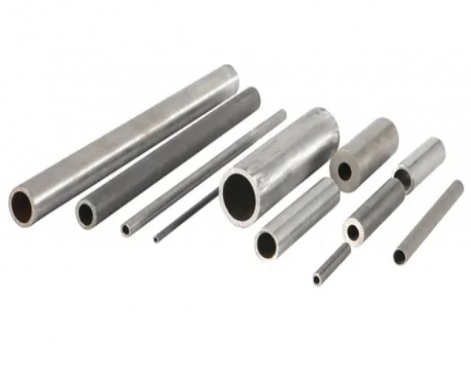Galvanized steel pipe refers to a steel pipe coated with a layer of zinc on the surface of ordinary steel pipes. The zinc layer can form a protective film on the surface of the steel pipe, which can effectively extend the service life of the steel pipe and improve the corrosion resistance of the steel pipe.
Schedule 40 galvanized pipe refers to a type of steel pipe that has been coated with a layer of zinc to help protect it from corrosion. The "schedule 40" designation indicates the thickness of the pipe, with schedule 40 being a standard measurement for wall thickness . This type of pipe is commonly used in various applications, including water distribution, plumbing, and other industrial uses where corrosion resistance is important.

Features of Schedule 40 galvanized pipe
1. Good corrosion resistance: The galvanized layer can effectively protect the steel pipe from corrosion and extend its service life.
2. High strength: Galvanized steel pipe has been strengthened and has high strength and wear resistance.
3. Convenient processing: Galvanized steel pipes can be easily cut, welded and installed.
4. Good air tightness: Galvanized steel pipes have good air tightness, which can ensure that the pipeline will not leak during operation.
Installation precautions of schedule 40 galvanized pipe
(1) Before proper installation, the galvanized layer of the pipe needs to be protected. Sharp objects cannot be used to directly touch the galvanized pipe to prevent it from affecting its later use, and it is also necessary to ensure that the galvanized pipe It should be straight and cannot be bent. Especially for some pipes, too much dirt should not be left to prevent some pipes from being blocked.
(2) When installing galvanized pipes, you should also check whether the pipe fittings are complete. If there is any damage, replace it in time. It can no longer be used. Otherwise, some problems will not easily occur. This is also easy. In order to shorten the use time, when cutting the pipe, it is necessary to ensure that the cut is smooth, and at the same time, the inner diameter of the pipe cannot be reduced.
(3) After the galvanized pipe is installed, it must be inspected to see if there are any broken wires to facilitate later maintenance. At the same time, the galvanized pipe must be oiled and wiped clean. Yes, the most important thing is to fasten it by yourself, so as to ensure that the force is even and prevent unnecessary trouble.
Schedule 40 galvanized pipe refers to a type of steel pipe that has been coated with a layer of zinc to help protect it from corrosion. The "schedule 40" designation indicates the thickness of the pipe, with schedule 40 being a standard measurement for wall thickness . This type of pipe is commonly used in various applications, including water distribution, plumbing, and other industrial uses where corrosion resistance is important.

Features of Schedule 40 galvanized pipe
1. Good corrosion resistance: The galvanized layer can effectively protect the steel pipe from corrosion and extend its service life.
2. High strength: Galvanized steel pipe has been strengthened and has high strength and wear resistance.
3. Convenient processing: Galvanized steel pipes can be easily cut, welded and installed.
4. Good air tightness: Galvanized steel pipes have good air tightness, which can ensure that the pipeline will not leak during operation.
Installation precautions of schedule 40 galvanized pipe
(1) Before proper installation, the galvanized layer of the pipe needs to be protected. Sharp objects cannot be used to directly touch the galvanized pipe to prevent it from affecting its later use, and it is also necessary to ensure that the galvanized pipe It should be straight and cannot be bent. Especially for some pipes, too much dirt should not be left to prevent some pipes from being blocked.
(2) When installing galvanized pipes, you should also check whether the pipe fittings are complete. If there is any damage, replace it in time. It can no longer be used. Otherwise, some problems will not easily occur. This is also easy. In order to shorten the use time, when cutting the pipe, it is necessary to ensure that the cut is smooth, and at the same time, the inner diameter of the pipe cannot be reduced.
(3) After the galvanized pipe is installed, it must be inspected to see if there are any broken wires to facilitate later maintenance. At the same time, the galvanized pipe must be oiled and wiped clean. Yes, the most important thing is to fasten it by yourself, so as to ensure that the force is even and prevent unnecessary trouble.









